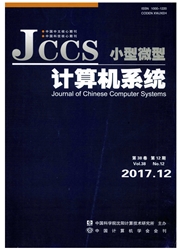

 中文摘要:
中文摘要:
在Web服务选择中,候选服务的QoS(Quality of Service)优劣起着决定性的作用.如何为具体用户准确预测服务的Qo S值是最近的研究热点.以往的工作聚焦于使用单一值(即点值)来预测Web服务的QoS.然而,现实中Web服务的QoS值常常是不确定的,随用户位置、网络状态和服务负载变化而不同.使用区间来估算Web服务的Qo S值可能更加符合用户的需求和实际情况.衡量区间预测的两个重要指标是置信度和精度,这两者常常是相互矛盾的.为了同时获得较高的置信度和精度,本文提出了一系列Qo S区间预测方法,包括基于相似用户(或服务)和基于最近用户(或服务)的方法.在真实Web服务数据上的实验表明,基于最相似用户和基于最近用户的方法能够同时取得较高的置信度和精度,因此具有较好的综合性能.
 英文摘要:
英文摘要:
QoS ( Quality of Service ) of Web services plays a key role in service selection. How to accurately predict Web service QoS has recently become a hot research topic. Several methods of Web service QoS prediction have been proposed, which aim at using a single,certain value to estimate the QoS value of a Web service. However, QoS values of Web services in reality are often uncertain, due to the dynamic change of environments such as user locations, network conditions and service workloads. Using intervals to esti- mate QoS values of Web services is more natural and thus likely to meet the user's requirements better. The performance of interval prediction is usually evaluated with two metrics,i, e. , confidence and precise, which are basically contradictory to each other. In order to obtain high confidence and precision simultaneously, we propose a set of interval-based QoS prediction methods including similar users ( or services ) based method and nearest users ( or services ) based method. Experiments on a real dataset of Web service QoS show that the similar users based method and the nearest users based method both can obtain a better tradeoff between confidence and precise than the other methods.
 同期刊论文项目
同期刊论文项目
 同项目期刊论文
同项目期刊论文
 期刊信息
期刊信息
